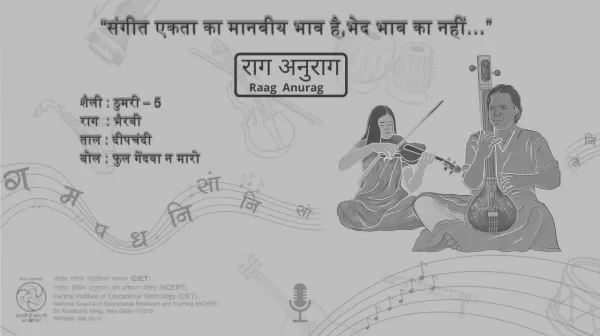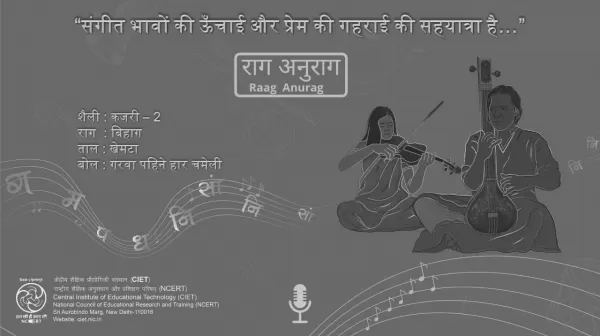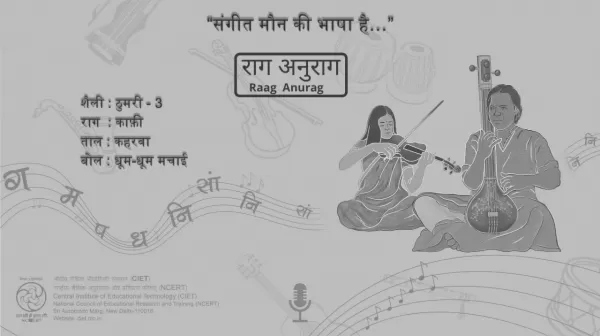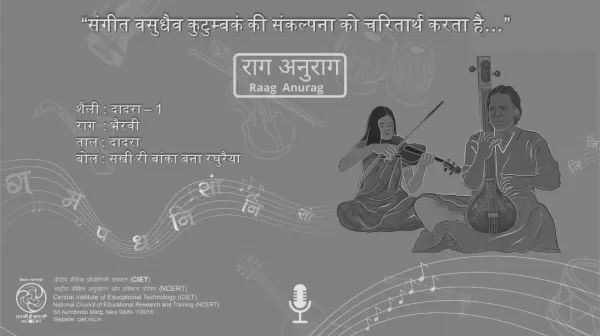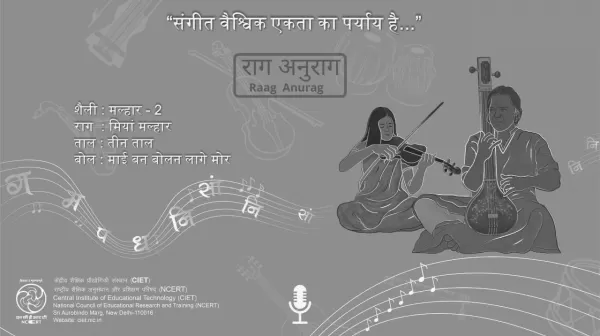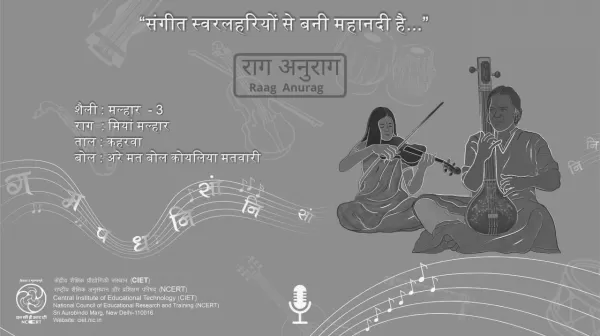Thumri 2 Rag Des "Mathura gaye more Shyam"
Thumri is one of the styles of Hindustani music having parts and sub parts. It comes under semi classical music. Expression of emotions is more emphasized in it in comparison to the purity of Rag. So is the reason that it is categorized under semi classical singing. The “Bandish” (Determined melody structure) is short in Thumri with prominence of essence of adornment and ornamentation. However, devotion based Bandish is also sung in Thumri. The Ragas used in Thumri are generally of fickle and playful tendencies such as Khamaj , Peelu, Bhairwi, Kafi, Gaurh Sarang and Des etc. Thumri is normally sung in short spanned beats having less intervals in which Kaharwa, Rupak and Teen Taal are prominent. Other than this, Deepchandi and Jat taal are also much prevalent in Thumri. This discipline allows freedom of transition from one Taal to the other taal. Presented here is Thumri based on Rag Mishra Des in Deepchandi Taal. Before listening to the Thumri based on Rag Des, let us know a little bit about Rag Des. Inception of Rag Des is from Khamaj family falling under category of Audav Sampoorn (i.e. 6 notes are used.) In ascension of this Rag, Gandhar (Ga or Me) and Dhaiwat (Dha or La) swaras are forbidden. Both Ni i.e.Ti are applied as Natural and flat as well. Wadi swara is Rishabh (Re or Re) and the Samwaadi swara is Pancham and the singing time is the 2nd watch of the night. Music is not confined to the geographical boundaries. Indian Ragas can be played not only in Indian musical instruments but in western musical instruments as well. Indian music and ragas are being played globally in all other instruments of many cultures and countries. Indian music is being propagated all over the world and liked so much by different world communities. Moreover, nowadays a revolutionary flavor of music has emerged called “Fusion music” a mix of traditional Indian and western musical instruments. Glossary of Indian-Western Music Sargam- Sa Re Ga Ma Pa Dha Ni (Saptak) Notation - Doh Re Mi Fa Soh La Ti Doh (Octave) {In Hindustani music there are 7 notes shown called Saptak i.e. 7} {In Western music there are 8 notes shown thus called Octave i.e. 8 } Aaroh- Ascension (Lower to higher notes) Avroh- Dissention (Higher to lower notes) Pakad – Insignia/ Recognition/Restricted melody grip Bandish/Rachna- Determined melody structure Shuddh Swara- Natural Note, Tonic Komal Swara - Flat (b)- One semitone lower in frequency Teevra- Sharp (#)- 1 semitone higher in frequency Taal- Beat Shaili- Style/Genre Audav- Pentatonic Scale with 5 pitches or notes per octave Shadav- Hexatonic scale with 6 pitches or notes per octave Sampurna- Septatonic scale with 7 notes or pitches per octave Thhat- Family Wadi is the primary note of any rag whereas usually the 5th note is Samvadi. Chord- Notes - Sa, Ga, Pa, Sa- (Doh, Me, Soh, Doh) All Natural notes=Major. If Ga (Me) is one semitone flat (Komal) it is Minor chord. Example- If any note is to be shown as Komal (flat), it is denoted as the sign of small b If any note is to be shown as Teevra (Sharp ), it is denoted as the sign # The rendering of any Rag may be in Major or in Minor chord regardless of any scale. Major chord means= All notes are natural; Example- Formation of Major chord- Sa, Ga, Pa, Sa {naturel} Minor means=One or more than one notes are either flat or sharp for one semitone. Formation of Minor chord= Sa(Natural). Re (Sharp or Teevra), Ga (Natural), Pa (Natural)
Playlist
Category
- 57 views

